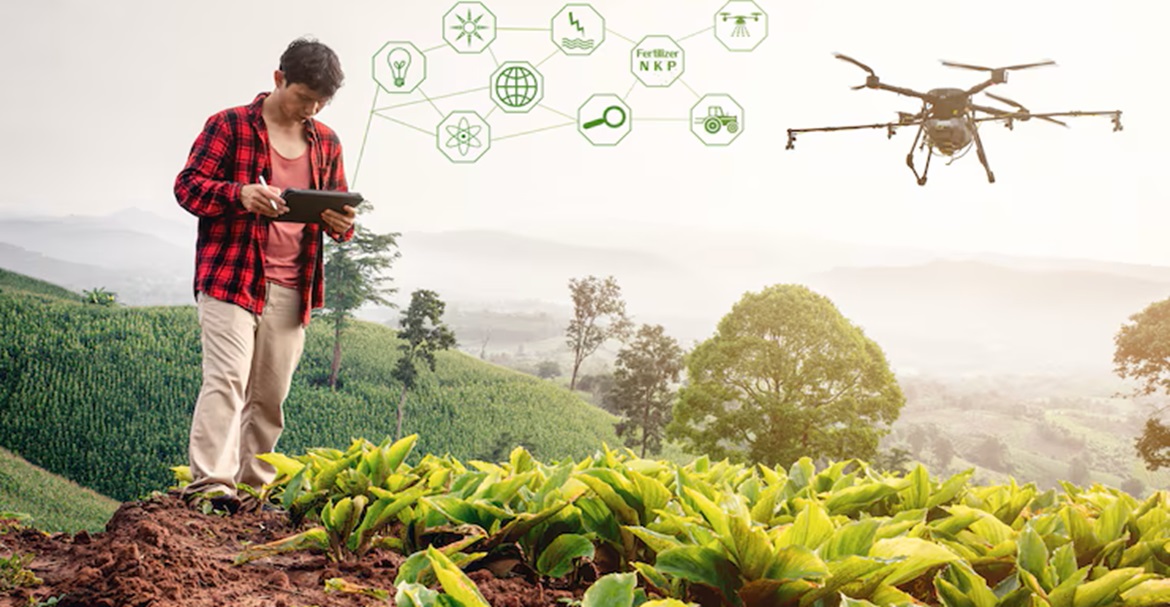- Your cart is empty
- Continue shopping
How Technology is Transforming Agriculture
-
admin
- Posted on
- Categories:Eco Technology, Eviroments, Home
- 0 comments

The New Era of Agriculture
Farming has come a long way from traditional methods of planting and harvesting.
With rapid advancements in technology, farmers can now produce more food with fewer resources. From automated irrigation systems to drones monitoring crop health, modern farms are embracing innovation.
Technology is not just for large-scale farms—small and medium-scale farmers can also benefit.
This article explores how technology is revolutionizing agriculture and shaping the future of food production.
Smart Farming: The Role of Automation
Farmers today are using automated tools to make farming easier and more productive.
- Automated tractors and harvesters help reduce labor costs and improve efficiency.
- Smart irrigation systems adjust water usage based on soil moisture levels, saving water.
- Robotic weed removers reduce the need for chemical herbicides, promoting organic farming.
- AI-powered monitoring systems provide real-time data on crop health and soil conditions.
Automation allows farmers to focus on higher-level decision-making while technology handles the hard work.
Precision Agriculture: Farming with Data
Precision agriculture uses data to optimize crop yields and reduce waste. Farmers now have access to satellite imagery, sensors, and AI-driven analytics to track farm performance.
- Drones monitor plant health and identify areas needing extra care.
- GPS technology ensures efficient planting and harvesting.
- Soil sensors analyze moisture and nutrient levels, guiding fertilizer use.
By relying on data, farmers can make informed decisions that boost productivity and sustainability.
Vertical Farming: Growing More with Less Land
Urban areas are seeing a rise in vertical farming, where crops grow in stacked layers indoors. This method allows for year-round production, regardless of weather conditions.
- LED lights provide artificial sunlight, reducing dependency on natural conditions.
- Hydroponic and aeroponic systems use less water than traditional farming.
- Pest control is easier since the environment is controlled.
Vertical farming could be the solution to feeding growing city populations with fresh produce.
Biotechnology: Improving Crops for Better Yields
Advances in biotechnology are helping farmers grow stronger and more resilient crops.
- Genetically modified (GM) crops resist pests and diseases, reducing pesticide use.
- Drought-resistant seeds help farmers grow food even in dry regions.
- Bio-fertilizers improve soil health naturally, reducing reliance on synthetic chemicals.
Biotechnology ensures that farmers can produce high-quality food while protecting the environment.
Livestock Farming: Healthier Animals with Smart Tech
Technology is also transforming the way farmers raise and manage livestock.
- Wearable sensors for animals track their health and prevent diseases.
- Automated feeding systems ensure animals get the right amount of nutrition.
- AI-driven breeding programs select the best livestock for future generations.
With smart farming techniques, farmers can improve meat and dairy production while ensuring animal welfare.
The Rise of Agribusiness and E-Commerce
Farmers are no longer just producers; they are becoming business owners through technology.
E-commerce platforms allow farmers to sell their produce directly to customers, cutting out middlemen.
- Social media marketing helps farmers connect with buyers instantly.
- Online marketplaces like farm-to-table apps increase product visibility.
- Subscription models enable customers to receive fresh produce regularly.
Technology is helping farmers build profitable businesses beyond just growing crops.

Challenges of Technology in Farming
Despite its benefits, adopting technology in agriculture comes with challenges.
- High initial costs make it difficult for small farmers to invest in advanced equipment.
- Technical knowledge is required to operate and maintain some technologies.
- Internet connectivity issues in rural areas limit access to digital farming tools.
To overcome these barriers, governments and private sectors must invest in making farming technology more accessible.
The Future of Farming: What’s Next?
The next wave of agricultural innovation is even more exciting.
- Artificial intelligence will improve farm management by predicting weather and crop diseases.
- Blockchain technology will increase transparency in food supply chains.
- Lab-grown meat could change the way we consume animal products.
- Autonomous farming robots may completely replace human labor in some areas.
The future of farming is high-tech, sustainable, and more efficient than ever before.
Embracing Change for a Better Future
Technology is reshaping agriculture, making it smarter, more efficient, and environmentally friendly. Farmers who embrace innovation can increase productivity, reduce costs, and ensure food security. While challenges exist, the benefits of agricultural technology far outweigh the drawbacks. By adopting modern farming techniques, the world can feed its growing population while protecting natural resources.
The future of farming is here—are you ready to be a part of it?
